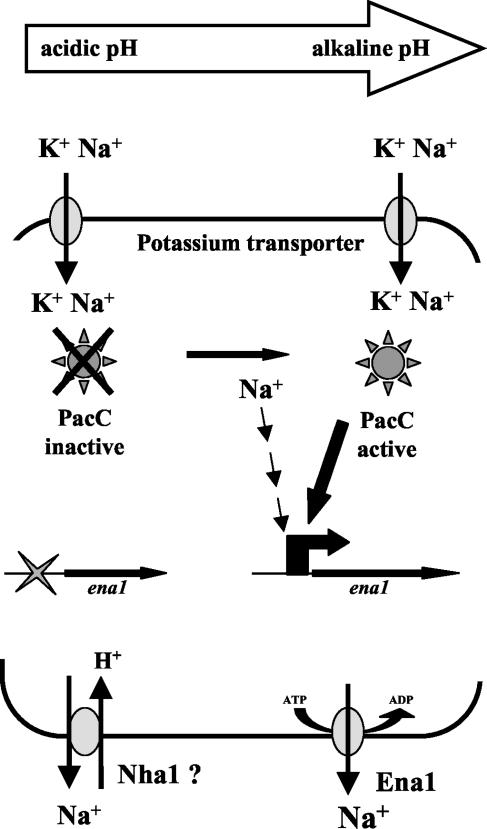FIG. 7.
Model for the role of PacC in the control of ion homeostasis in F. oxysporum. High external concentrations of Na+ result in an increased influx of the cation, elevating intracellular Na+ levels beyond a threshold. This triggers transcriptional activation of the ena1 gene encoding a P-type Na+-ATPase via an unknown signaling mechanism. In addition, expression of ena1 also requires binding of the activated form of PacC transcription factor to its cognate binding sites in the promoter. Proteolytic activation of PacC occurs predominantly at alkaline ambient pH; therefore, both high Na+ concentrations and high pH are required for transcriptional activation of ena1. Conversely, at acidic pH an alternative, PacC-independent Na+ efflux system is active, possibly based on a Na+/H+ antiporter orthologous to Nha1 of S. cerevisiae. Besides activation of ena1, PacC may have additional regulatory effects on ion homeostasis.

